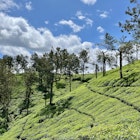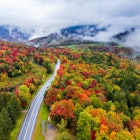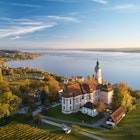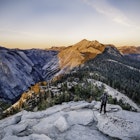
Oct 3, 2025 • 6 min read
Wayanad a region with boundless tea estates, mist clinging to mountains and waves of coconut palms, betel nut palms and banana trees.

Oct 3, 2025 • 6 min read
Wayanad a region with boundless tea estates, mist clinging to mountains and waves of coconut palms, betel nut palms and banana trees.

Oct 3, 2025 • 14 min read
In a country mad for the open road, Route 66 is the quintessential American road trip. Our full guide covers where, when and how to get the most out of it.

Oct 3, 2025 • 12 min read
Explore this lush region in northern Spain, with its rugged mountains with brown bears, dramatic coastlines and unique architectural history.

Oct 3, 2025 • 13 min read
The mountainous coast of the Italian Riviera attracts travelers in droves during the summer. Follow this 5-day itinerary to take in the highlights.

Oct 3, 2025 • 6 min read
Ireland’s second-largest city earns its fierce pride with attractions that combine the charm of a small town and the cultural scene of a much larger burg.

Oct 3, 2025 • 11 min read
While Canada’s Alberta and British Columbia provinces are alluring destinations any time of year, fall is undoubtedly my favorite.

Oct 3, 2025 • 8 min read
Siem Reap has long attracted visitors to Angkor, but the city adds an alluring mix of nightlife, adrenaline-fueled activities and cultural experiences.

Oct 3, 2025 • 8 min read
The Algarve’s capital of partying by the beach, Albufeira also has history, culture and nature – if you know where to look.

Oct 3, 2025 • 12 min read
Here's everything you need to know about snorkeling and diving in Indonesia, where the marvels below the waves are as remarkable as life on land.

Oct 3, 2025 • 8 min read
Get an authentic taste of Thailand's northwest corner with this guide to driving the Mae Hong Son loop on a motorbike.

Oct 3, 2025 • 8 min read
See some of the US and Canada's best fall foliage on these scenic road trips.

Oct 3, 2025 • 7 min read
Europe's little-known wine regions provide fabulous wines and travel opportunities.

Oct 3, 2025 • 4 min read
In early November, millions memorialize the departed with Día de Muertos. Here are the best US celebrations.

Oct 2, 2025 • 8 min read
I believe that Providence is the most West Coast city on the East Coast, but with a salty New England twist.

Oct 2, 2025 • 8 min read
Whether you're seeking snorkeling in Vietnam or an awe-inspiring view of Canada's northern lights, you'll find much to enjoy in this great big world.

Oct 2, 2025 • 3 min read
Many travelers to Fiji don't need to apply for a visa in advance. Check your status with this guide to entry requirements.

Oct 2, 2025 • 6 min read
Shop the best souvenirs in Delhi—from block-printed textiles to attars, jewelry, snacks, and more. Where to buy, what to get and tips for bargaining.

Oct 2, 2025 • 7 min read
Strap on your snowshoes! Here's our pick of the best nature walks and hikes to do this winter in the US.

Oct 2, 2025 • 9 min read
England is famous worldwide, yes — but you shouldn’t think you know everything before you go. Here are essential tips before your next trip to England.

Oct 2, 2025 • 12 min read
From outdoor adventure to relaxed dinners under incredible sunsets, Albuquerque is a laid-back city steeped in centuries of diverse cultures.

Oct 1, 2025 • 7 min read
Vietnam was made for road warriors. From the mountains to the Delta, these road trip routes guarantee a top-notch view of this incredible country.

Oct 1, 2025 • 9 min read
Don’t shrug off the Garden State. From beaches to historic sites to top-tier dining, here are the best things to do in New Jersey.